By Jonathan North
Early in the morning of Tuesday, May 29, 1453, they came swarming like hungry wolves over the plain between the Turkish palisades and the battered walls of Byzantium. Thousands upon thousands of wild and ferocious men rushed through the darkness upon the exhausted defenders. Scimitars glistened in the flickering light of torches. Monotonous drums, blaring trumpets, and clashing cymbals urged them on with a frenzied beat. Across the besieged city, bells tolled dolefully as exhausted defenders prepared to make another supreme effort, while women and children sought sanctuary in churches and behind bolted doors. But on came the Turks, their shouts audible, their approach like the rushing of a wave. The spectacle was magnificent and terrifying. The Sultan’s army was storming Constantinople.
The first wave of the ferocious assault was soon crashing into the city’s defenses. Bashi-Bazouks, drawn from all over the Ottoman Empire, were desperate for plunder and frustrated by weeks of fruitless siege. They showed astounding energy and valor as they surged beneath the walls, raising ladders, cheering, cursing, baying for blood. The chain-mail-clad Greek and Italian defenders, fighting for their lives, sent stones hurtling down into the warriors below or picked off Turks with crossbow bolts. For “an hour the savagery continued. Ladders were raised only to be sent crashing down into the jostling throng. Turks turned to run, only to find a cordon of Imperial officers cutting down those who attempted to flee. Most fought with a frenzy the defenders were astonished to behold until, finally, the Sultan relented and the first wild wave turned away from the walls and ran back to the Ottoman camp.
“They Shall Conquer Constantinople”
Relieved, the defenders nervously paused for breath, wiping the sweat from their foreheads, tending to the wounded, and cleaning their weapons. Then, nudging each other and glancing out into the Turkish lines, they caught sight of the second wave gathering in the gloom, and again the Turkish musicians broke the silence with their deafening, terrifying din. The Sultan, the youthful Mehmet II, had sworn to take the city; the Prophet’s words, “They shall conquer Constantinople and glory be to the prince and to the army that shall achieve it,” rang in his ears.
For decades the fall of Byzantium had seemed inevitable. Ottoman armies under Murad I had bypassed Constantinople and swept into the Balkans in 1360, conquering Macedonia, devastating Bulgaria, and clashing violently with Serbs and Hungarians. The emperors of Byzantium were mere vassals during the following decades of consolidation, before the Turks again turned to conquest in Europe. In 1388 they clashed with the unbowed Serbs, a decisive battle fought on the “field of the ravens” at Kosovo. There, on the desolate plain, the East triumphed over the West and the Serbs were slaughtered in the thousands. The Balkans passed over to Turkish rule for the next 500 years.
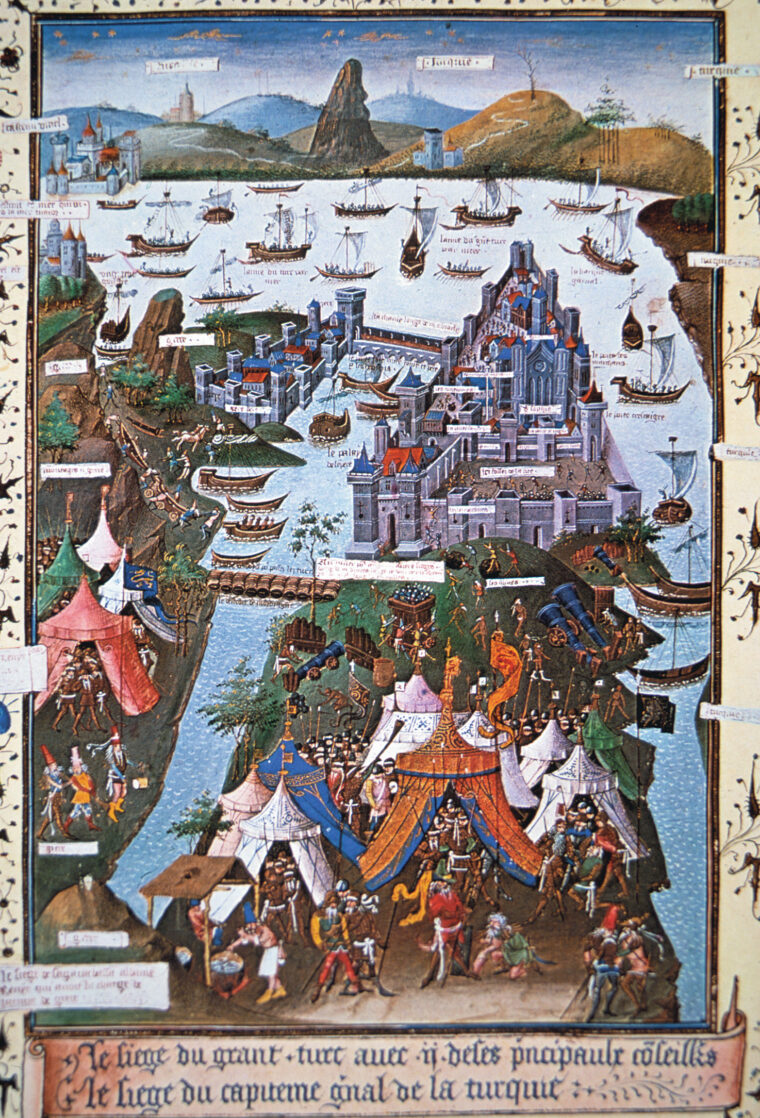
Left Isolated and Vulnerable
This left the last city of the Romans, magnificent Constantinople, isolated and vulnerable, surviving through the humiliation of paying tribute or because the Turks were campaigning against the Tartars. Slyly, in the 1430s, Byzantine power, largely reduced to governing a few Greek provinces, began to reassert itself. Profiting from Western Europe’s concern over the Ottoman successes, and enjoying support from the Venetians, Genoese, and the brilliant John Corvinus Huniades of Hungary, the empire enjoyed an all-too-brief renaissance. In 1451, this optimism was shattered when the young Mehmet succeeded his father, Murad, to the Ottoman throne. For war was in his heart and he longed to conquer Constantinople and thus bond European Ottoman territories more closely to his domains in Asia. When the Greeks attempted to use Orkhan, a Turkish pretender to the Ottoman throne, in a complicated display of Byzantine intrigue designed to threaten the new ruler, the plot backfired and the Sultan was outraged. It was the pretext for conflict.
The Sultan’s first act was a warning the Greeks should have heeded. Ottoman stonemasons and laborers toiled on the construction of a formidable castle north of the city. It was meant to dominate the Bosphorus, and it rose on Byzantine territory. Embassies pleaded with the sovereign. At first they were turned away unheard. Finally, they were arrested and beheaded. In just four months the castle above the strait was completed. It was given the all-too-menacing title “Cutter of the Throat,” and armed with cannon that barred the channel to Christian shipping.
Throughout 1452 the Sultan worked hard marshalling his forces, assuring peace and security in his Asian possessions. He constructed ships and founded cannon—the Turks eventually dragged 200 guns with them. One monster, built by a Hungarian engineer in Ottoman service, was 26 feet long. Its detonation could, so contemporaries report, be heard 10 miles away. Those besieged in Constantinople would have reason to fear such formidable artillery.
Byzantium Fully Under Seige
While his army gathered in the Balkans, the Sultan studiously planned, examining his best maps of the city. In March 1453 he sent his fleet, commanded by a Bulgarian admiral, into the Sea of Marmara, driving off Greek and Italian ships and effectively blockading the city from the sea. Meanwhile, his huge land army of 100,000 men was on the march, moving through Thrace and camping before the city’s 14 miles of walls. By Easter, Byzantium, which had seen many sieges by many hostile nations, was well and truly besieged.
The population of the city was horrified by the arrival of the Sultan’s host. The Emperor Constantine could only muster some 6,000 Greeks, 2,000 Italians, and the crews of the ships trapped in the great harbor. The 1,000-year-old walls were protected by 70 guns—all the city could afford—but even then gunpowder was lacking. Although few in number, the defenders’ chances were at least augmented by the skill and resourcefulness of their commander, the great Giovanni Giustiniani.
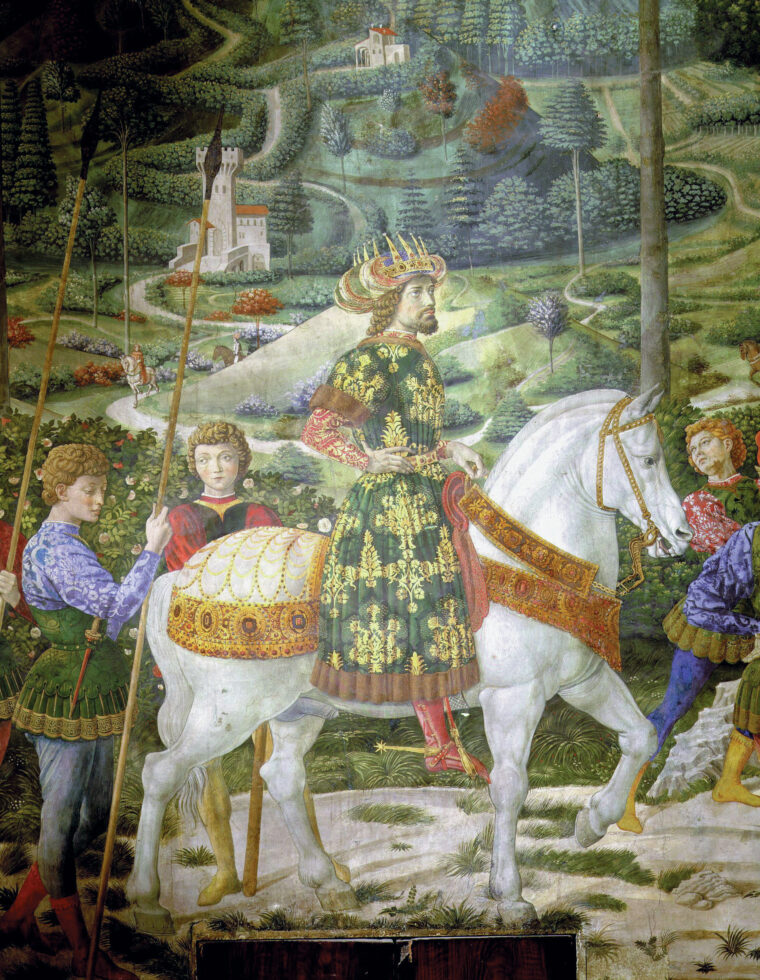
Fortunately, he was an expert in defending fortified places. He set about tapping the desperate energy of the population to improve the defenses and prepare for the mighty onslaught. A boom was placed across the mouth of the Golden Horn, a narrow channel that protected the city’s vulnerable northern flank. The Emperor placed himself where the walls crossed the Lycus valley, opposite the Sultan’s camp and in the center of the city’s defensive perimeter. Giustiniani joined him there.
A Venetian named Minotto commanded on the extreme right by the Golden Horn, while to the left of the Emperor was Cattaneo and Genoese troops. To their left—on the extreme left of the Byzantine position—stood Paleologue and the pick of the Greek troops, with more Italians under Contarini. Few troops could be spared to man the sea walls, but lookouts were placed and a mobile reserve positioned in case it was needed. Finally, to protect the crucial boom, Venetian and Genoese sailors, many armed with crossbows, stood ready. In contrast to the Sultan’s big guns, the besieged relied on a few culverins, light cannon, and mangonels for hurling stones.
The Sultan’s troops were soon in action. First he attacked and took the little fort of Stoudion outside the city walls. His soldiers killed most of the garrison in the assault, but captured 36 survivors. These unfortunates were dragged before the walls of the city and, in full sight of the defenders, impaled on sharpened stakes as a warning not to resist. At the same time, the Turkish fleet reduced the Princes Isle, a small fortified position in the Marmara, by bombarding it and setting it on fire. The Turks even fanned the flames by throwing sulphur into the defenses. A few Christians swam ashore, but they were met on the beach and beheaded. The scene was set for the most merciless of sieges.
“Their Shouts Could Be Heard on the Distant Shore of Asia”
The Turks first built a palisade, excavating a ditch and fashioning a rampart topped with a wooden wall. On April 6, their guns, supported by catapults, opened up on the miserable city. For days the bombardment continued. Then on the 18th, they launched their infantry assault. Nicolo Barbaro, a Venetian naval surgeon, witnessed the scene: “On the 18th day of the said month of April I saw a great mass of Turks storm towards the walls. This was at two in the morning and the attack continued until six. In the struggle numerous Turks died but, as they first approached at night, they came unexpectedly and took our troops by surprise. There were so many shouts and cries and the beating of drums that there seemed far more of them than in reality there actually were. Their shouts could be heard on the distant shore of Asia, 12 miles from their camp. While they shouted so, Emperor Constantine, full of anxiety, cried tearfully that such a general assault could hardly be beaten off by the Christians as we were not fully prepared to meet it. But God did not wish for such an abomination to take place yet and at six quiet was restored. The Turks lost 200 of their men while, due to the grace of God, we did not lose one dead or even any wounded.”
The Turkish assault had indeed failed. Although thousands of Turks had poured forward shouting “Iagma! Iagma!” (“To the assault!”), their élan had not been enough.
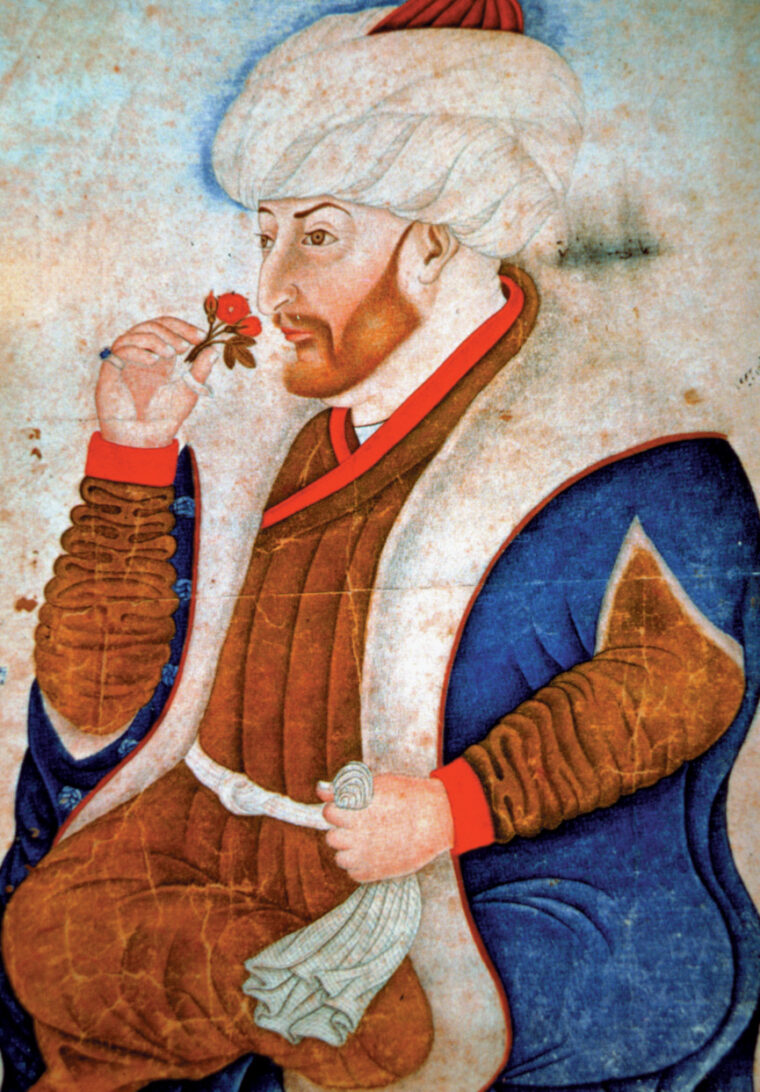
Hope Among Defenders Renewed, but Bombardment Continues
Hope among the defenders was renewed. Still, the bombardment continued and the fierce cannon of the Turks demolished towers and walls. On the 19th, Turkish artillery even managed to shell the Christian ships in the harbor, sinking one galley and damaging others. Assaults were launched but bravely defeated, the besieged plugging the breaches with barrels of earth and bales of wool. Nonetheless, the expertly managed siege was taking its toll.
On April 20, there was a dramatic success for the besieged. Three Genoese galleys, commanded by Cattaneo, Novarre, and Felliciano and escorting a Byzantine merchantman, arrived from Chios with supplies and badly needed reinforcements. As soon as they came within sight of the city, they were immediately set upon by the Turkish fleet and their wily commander, but the Christian ships, sailing in a tight knot, heroically pushed through the enemy and slipped into the harbor, much to the joy of the inhabitants.
The ships raised morale, but the supplies they carried with them were of limited value for such a vast city. Water was scarce and food often rancid. Soon morale plummeted to new lows. Moreover, the Ottomans, in a tremendous feat of ingenuity, circumvented the boom by transporting warships overland using teams of oxen and greased timbers, and deposited them in the Golden Horn. Soon 70 ships were menacing the city’s entire northern flank. The emperor’s counselors begged him to flee. He bravely chastised them, invoking the Good Shepherd who lays down his life for his flock.
Silence Reigns in the City
The city’s defense was indeed proving stubborn. The Sultan was taxed by slow progress and his army of 100,000 men were increasingly frustrated. When a final offer to surrender was rejected, the Sultan and his advisers planned one final, all-consuming assault. Silence reigned in the city on Sunday, May 27, while in the Ottoman camp Imperial heralds rode among the tents proclaiming that the Sultan had granted the troops three days to sack the city at will. Rewards were reserved for the first to scale the walls and the city’s populace would be sold as slaves. Frenzied cheering continued throughout the night. On Monday the Turks rested, allowing the torment of their psychological pressure to settle with the defenders. Then, early on Tuesday morning, came the first wave of the assault.
The defenders beat off the Bashi-Bazouks, but the work exhausted them and they were dismayed to see a second wave preparing to attack the center. This force of armored infantry, some 20,000 men, was composed of soldiers drawn from the Sultan’s Asian possessions. With measured steps they advanced against the walls. Although missiles rained down upon them, they swept over the partially filled outer ditch and began to raise ladders against the walls. The weary defenders fought back, throwing huge stones over the parapet, crushing those below. Over the heads of the attackers the Sultan’s guns fired missiles into the city and against the parapets. At one point, 300 Turks almost surged through a poorly repaired breach, but the defenders rallied and chased them out.
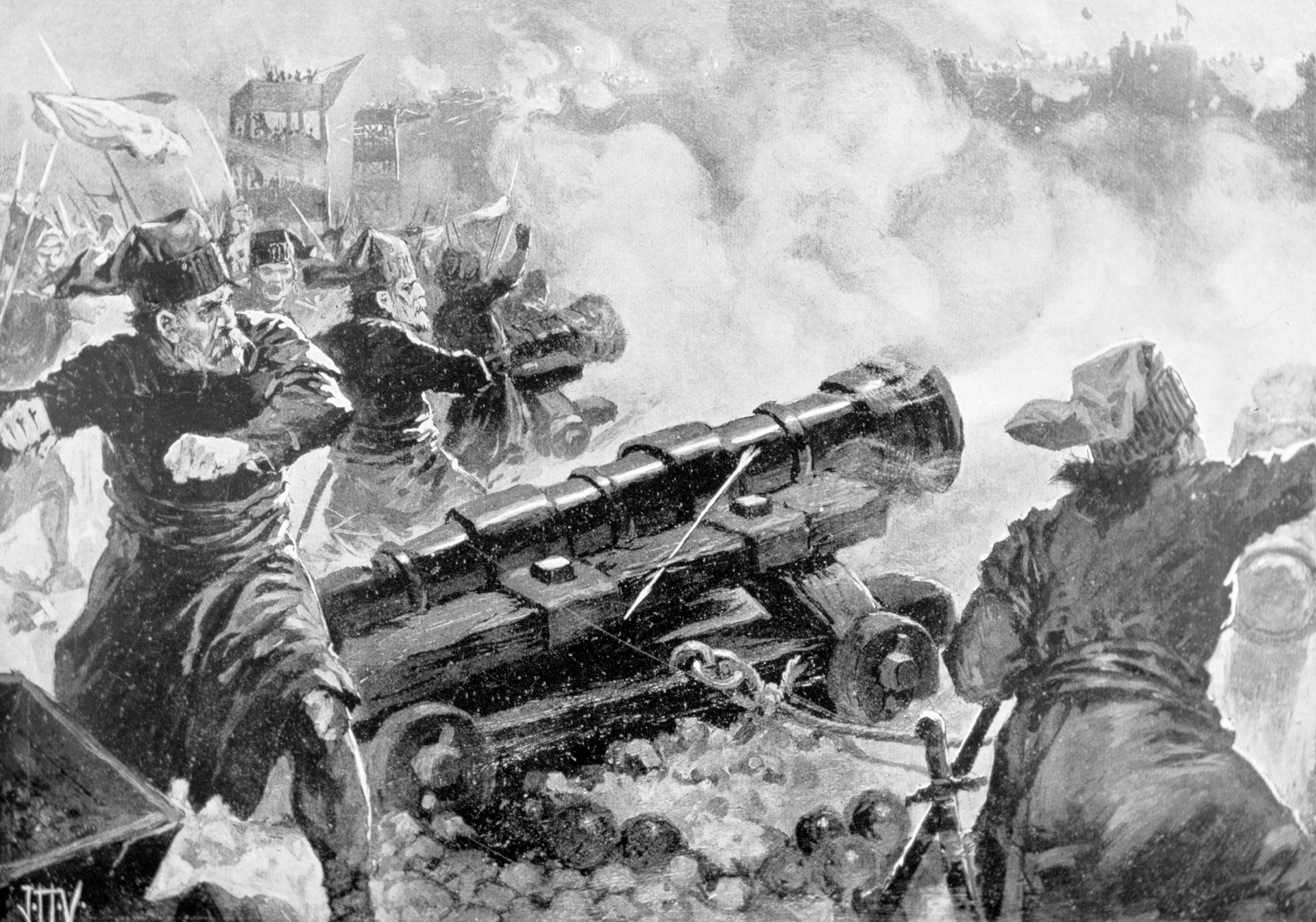
The assailants faltered, and despite the Sultan’s urging, they began to fall back. Their exertions had been valiant and their casualties were heavy. The defenders, gazing at the corpse-strewn field below, turned to congratulate themselves. Many were wounded and all, after hours of terrible combat, were at the end of their strength. The Greeks and Italians were tormented by thirst but were deprived of relief, for nearly every man was needed on the walls.
Would the Ships Arrive in Time?
Their greatest test was to come. Behind the Turkish palisades the elite of the Sultan’s army was gathering and forming up in regimented ranks. The feared and respected Janissaries had been called upon to throw their weight into battle and, for their master, deem Constantinople a victory or a defeat. Should they fail, the Sultan was sure that relief would arrive for the city and he would be forced to march away beaten. Already news that a Venetian fleet was making its way through the Aegean had unsettled him. Delayed by contrary winds the Italian ships were just then off Tenedos. Other ships, sent by the Pope, were at Chios. Would they arrive in time? The Janissaries would decide—so they advanced.
They kept their formation despite the rain of missiles plunging down upon them. These veterans advanced, their batteries of drummers beating an infernal din, their proud standards aloft. Passing their Sultan they cheered while he, holding his mace, looked on in the knowledge that should they fail his enterprise would be doomed. Gaps were created in their ranks, but they closed up and pressed on while the Sultan’s artillery fired over their heads, battering the defenses. Turkish archers and handgunners ran forward to maintain fire against any Christian on the parapet who dared to raise his head, while the Ottoman host relentlessly advanced, trampling those who had tried before. Soon they were raising scaling ladders against the walls or smashing at the wooden beams and baskets of earth that plugged the breaches.
The exhausted defenders tenaciously fought back that Tuesday morning, but their strength was failing. Diversionary attacks along the Golden Horn and against Minotto’s Venetians unsettled them and this four-hour assault was testing them to their very limits. At this critical time, Giustiniani, the Genoese lion, was hit by a shot from a handgunner. “He was wounded just before dawn by a lead shot which went through the back of his arm, penetrating his iron breastplate,” wrote a witness. Badly wounded and in pain, he demanded to be taken to the rear and, most fatefully, to a Genoese ship in the harbor.
Although the Emperor himself pleaded with the soldier to stay, he could not be persuaded. It was, if anything, a signal that the defense had buckled beneath the might of the Ottomans. The Genoese general, accompanied by many but not all of his troops, retreated. Some of the Italians took this opportunity to make for the boats. The anti-Genoese Nicolo Barbaro—keeper of an exceptionally detailed diary of the siege—noted that “they fled through the open gate, abandoning their post and running to the beach in order to save themselves on their boats or galleys; all, like women, beseeching God to save them.”
“Friends, the City Is Ours!”
Had Giustiniani been replaced by another of equal merit the situation might have been saved, but at that fatal hour the damage was done. The Greeks and Italians on the outer wall fought ruthlessly to keep the Turks at bay, but the Turkish attacks were unrelenting; it was almost as though they now sensed victory. They were urged on by the Sultan, riding his horse along the lip of the outer ditch and shouting, “Friends, the city is ours! The defenders are fleeing! They won’t hold! A little more effort and it will be ours!”
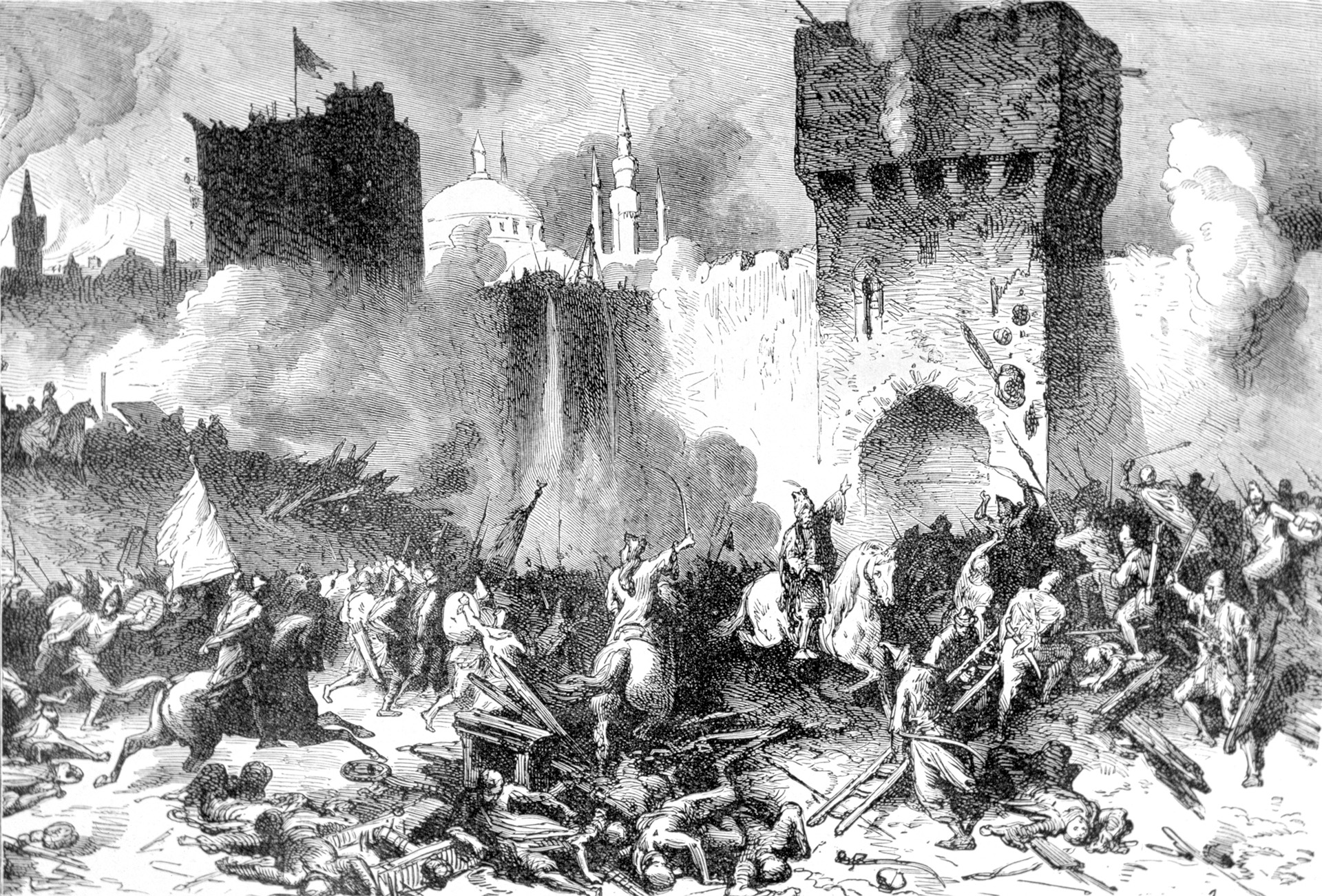
It wasn’t long before a huge Janissary known as Hassan, responding to such encouragement, made his way onto the parapet. Quickly followed by 30 veterans, this small group hacked their way along the wall and were quickly joined by more and more of their comrades. Hassan was killed, but the defenders were pushed back. Gradually they were forced down to the ground between the inner and outer walls. There the Greeks were trapped as they tried to make their way to the gate through which Giustiniani had fled. Tormented now by the Turks on the parapet, they were further disheartened by news that the Janissaries had broken through the inner wall at the Kerkoporta. This was a small gate on the corner of the Blachernae section of the wall, which, unfortunately, had been left unbolted. A group of Janissaries spied their opportunity, rushed in and through the courtyard then up the stairs and onto the inner wall. The entire party was cut down, but more Turks followed and their standards were soon flying from the towers. It was nine in the morning and Constantinople was about to fall.
Emperor Constantine, surrounded by a band of faithful retainers, continued to rally his men by the gate through which Giustiniani had been carried. For a time they held the attackers at bay, but soon the tide of Turks overwhelmed their diminishing defense. Citizen soldiers made their way off through the streets to protect their families from the horror to come; the Italians attempted to reach ships stranded in the harbor. Bands of desperate men fought on and few were more desperate than the Emperor of this crumbling empire. Constantine removed his Imperial insignia and, with his closest retainers, plunged into the fray, sword in hand. One of his retainers saw the Emperor’s final moment: “My beloved sovereign tearfully called upon God for strength and encouraged his men to fight bravely. There was no more hope of victory, no more hope of relief. Dressed as a simple knight he attacked the enemy. He cut down a number of the enemy and blood ran at his feet. On his right Francis of Toledo, brave as Achilles, fought. To his left Theophile Paleologue, cried out that he would prefer to die too. John of Dalmatia also covered himself with glory.”
Desperate Heroes Disappear Into Crowd
Paleologue and John of Dalmatia were the first to fall, hacked to pieces by scimitars. The rest of the desperate heroes disappeared into the milling crowd of combatants. Apparently, the 49-year-old emperor was wounded then struck down from behind, his body then trampled as the Turks pushed on to gain what they could of their promised booty.
A remarkable witness, in the form of a Serb fighting in the Turkish ranks as a Janissary, related that “Constantine fought bravely but finally fell, killed by a Janissary. He cut off the imperial head and threw himself at the feet of his Sultan, proclaiming, ‘Fortunate Lord, here is the head of the most redoubtable of your enemies.’ The Sultan, turning to a noble prisoner named Andreas asked to whom the head belonged. ‘To our master, the emperor,’ replied the distraught Greek. The Sultan rewarded the Janissary, called Safaler, and promoted him governor of Aidin in Anatolia.”
Now other Turks pressed forward to receive their rewards. The rule of terror began. An eyewitness recalled: “The Janissaries, followed by the rest of the army, entered the city like a torrent. Some came through the gate Giustiniani had used, others through the breach in the outer wall. The whole army poured in and pressed victoriously through the city. The Sultan, ecstatic, stood by the standard now being raised on the ramparts and rejoiced. The city had fallen.”
With the Turks storming through the city, many of the defenders found themselves cut off. Some threw themselves to their deaths; others surrendered. Minotto was captured at the Blachernae palace, Contarini and Cantacuzenus in the Lycus valley. Now Turks, “raging and furious,” swarmed into the city from the ships in the Golden Horn. Some quarters put up fierce resistance. The brothers Paolo, Antonio, and Troilo Bocchiardi and a handful of Italians fought valiantly, clinging to a position around the Adrianople gate, buying time for others to get to the ships. They in turn fought their way through the streets, escaping while beating off attacks. The Turks were not taking armed soldiers prisoner, and many of the Turks shouted, “Kill the elderly, take the young ones captive!”
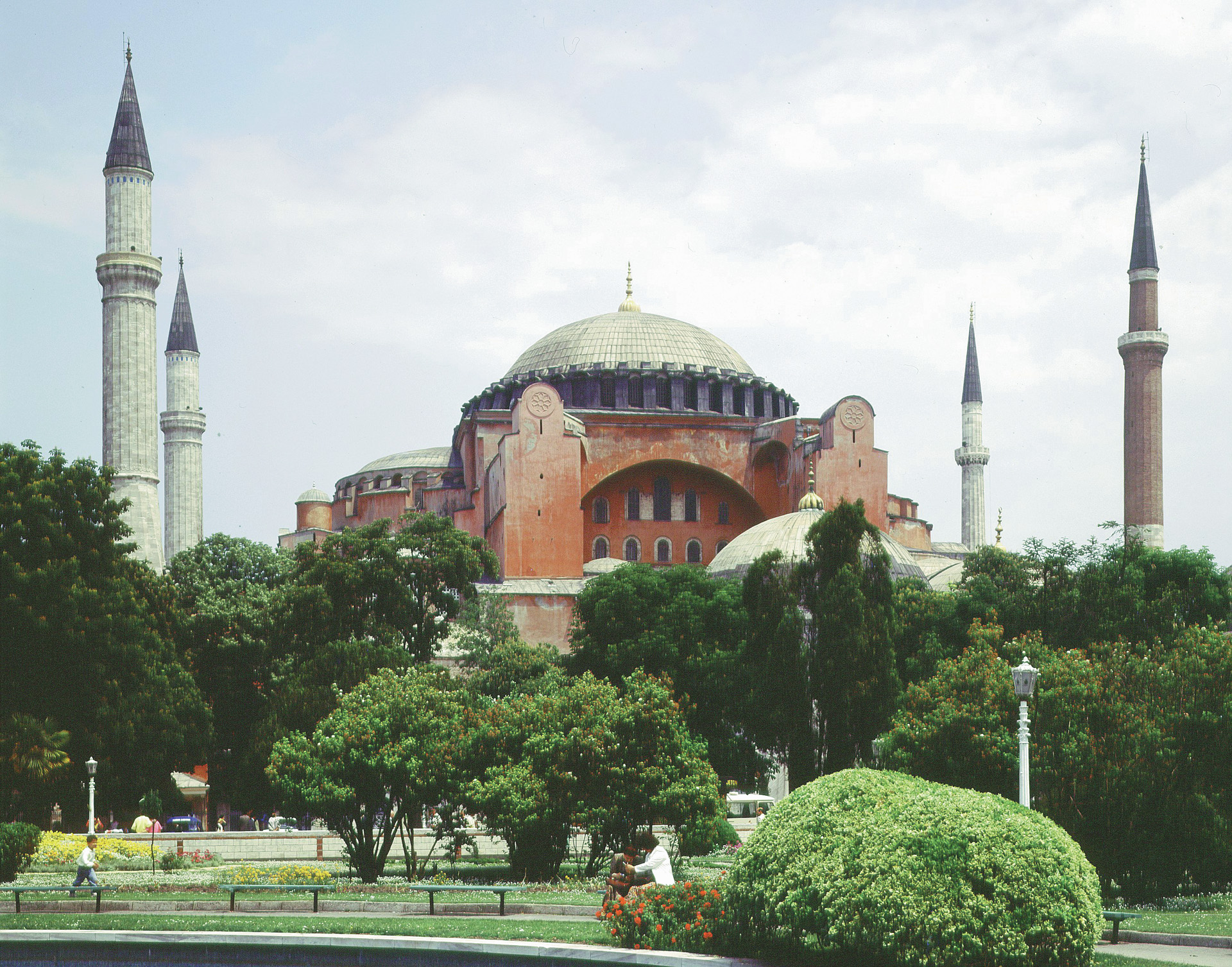
“The Struggle Was Long and Drawn Out…”
Meanwhile, isolated pockets of resistance fought on. Some 150 men from Crete defended themselves valiantly by the Horaia Gate. Their assailants, deterred by the courage of the Cretans and hungry for loot, made some half-hearted attacks before dispersing. A Russian eyewitness recalled in his chronicle of the siege that “the struggle was long and drawn out. The population defended itself against the Turks in the streets and squares and refused to surrender. Soldiers clambered onto roofs and hurled down tiles, bricks and burning beams onto the heads of the Turks below. The pashas feared greatly for the life of the Sultan should he enter the city and counseled him against this.”
Few scenes from history could have been more awful than the picture now presenting itself. Blood ran in the streets of Byzantium and fire took hold. Shouts, curses, and screams almost drowned out the ever-present sound of mournful tocsins. Some of the Christians contrived to escape in the confusion. While Turkish sailors and soldiers swarmed ashore to partake in the sack of the city, Christian ships were alive with feverish activity. Terrified crews prepared for escape while fugitives swarmed aboard. Many swam out, while others died in the attempt. The Italian captains kept their ships in the harbor until noon, hoping to save as many fugitives as possible. Tetaldi, a Florentine soldier, was one of the lucky ones. He had been posted to defend a remote point of the city and hadn’t heard that the city had fallen until two hours after the Turks had broken in. He fled through the streets, dodging Turks, and made it to the harbor. Stripping down to his underclothes, he swam out into the bloody waters and clambered onboard a Venetian vessel.
Turkish ships were now rallying and it was soon determined that escape would have to happen now or never. Barbaro witnessed this desperation: “There was no more hope and all we could do was to save ourselves and our ships by heading out of the harbor and breaking down the boom. Our ships unfurled their sails and made ready their oars. When we reached the chain two strong men fell upon it and with axes managed to break it in two. We made our way tentatively out of port and gradually out to sea. We waited off shore for a little while in the hope that others might follow. None did so as they had all become prisoners. So it was that our galley followed that of Girolamo Morisini and that of Dolfin. This latter was missing 164 of its crew as these had drowned or had been killed during the siege, and it was only with great difficulty that it made any progress. There was also the galley of Gabriel Trevisan but he, brave man, had been captured by the Turks on land. The galley from Candia, commanded by Zaccaria Grioni had been captured by the Turks but three others from that place, commanded by Venier, Filamati and Galina, did manage to follow us. We had a northerly wind and travelled at 12 miles an hour, thus saving ourselves, thanks be to God. Had there been a calm we would all have been seized.”
Death and Destruction Close in on City
Nine Genoese vessels sailed out—including the one carrying the mortally wounded Giustiniani—accompanied by a handful from Venice and five Imperial galleys. They waited at the harbor mouth in the hope more would follow, hovering as long as they dared, but before too long made with all speed away from the city. Other ships attempted to follow but were intercepted by Turkish vessels that Admiral Hamza Bey had managed to muster. Crowded with fugitives, the Christian ships faced the inevitable and surrendered. A few small boats, nimble and quick, eluded the larger Turkish vessels and made off, but few managed to escape. Death and destruction now closed in on the unfortunate city.
Barbaro, safely onboard a Venetian vessel, could look back and contemplate the fate of those left on shore: “The Turks sought out plunder and seized the goods of the merchants. What is more they burst into the monasteries and all the convents’ nuns were dragged off to their ships to be violated and then sold into slavery. So too were the young girls of the city. A few preferred to drown themselves in the city’s wells than succumb to this fate. A few married women also committed suicide. The Turks soon filled their ships with the richest treasure and captives. At this time they had the habit of raising a flag outside a house they had already pillaged and when other Turks saw such a flag they moved on to another and soon raised their flag before it. They did the same before the churches and monasteries. If I am not mistaken there were 200,000 such flags waving before long. For the whole of the day the Turks massacred the Christians. Blood ran in the streets, forming streams as though it had rained. The bodies of the murdered Christians as well as those Turks killed in the assault, were thrown into the sea and washed away by the tide, like a melon would be if you threw it into the canals of Venice.”
Prisoners Are Sold “Like Sheep”
Throughout the morning, massacre and plunder reigned as the city was thoroughly sacked. Prisoners were seized for ransom or to be sold “like sheep.” Houses were broken into, palaces gutted and stripped bare. The cowering population hid in their houses or attempted to flee to sanctuary in the great church, the Cathedral of the Holy Wisdom (Hagia Sophia). Believing that this great religious house would be full of treasure, Turkish troops broke open the doors of the cathedral with axes and rushed in to be met by the screams of thousands. Some of the people were massacred, but most were herded out as captives to be sold into slavery in the Turkish camp.
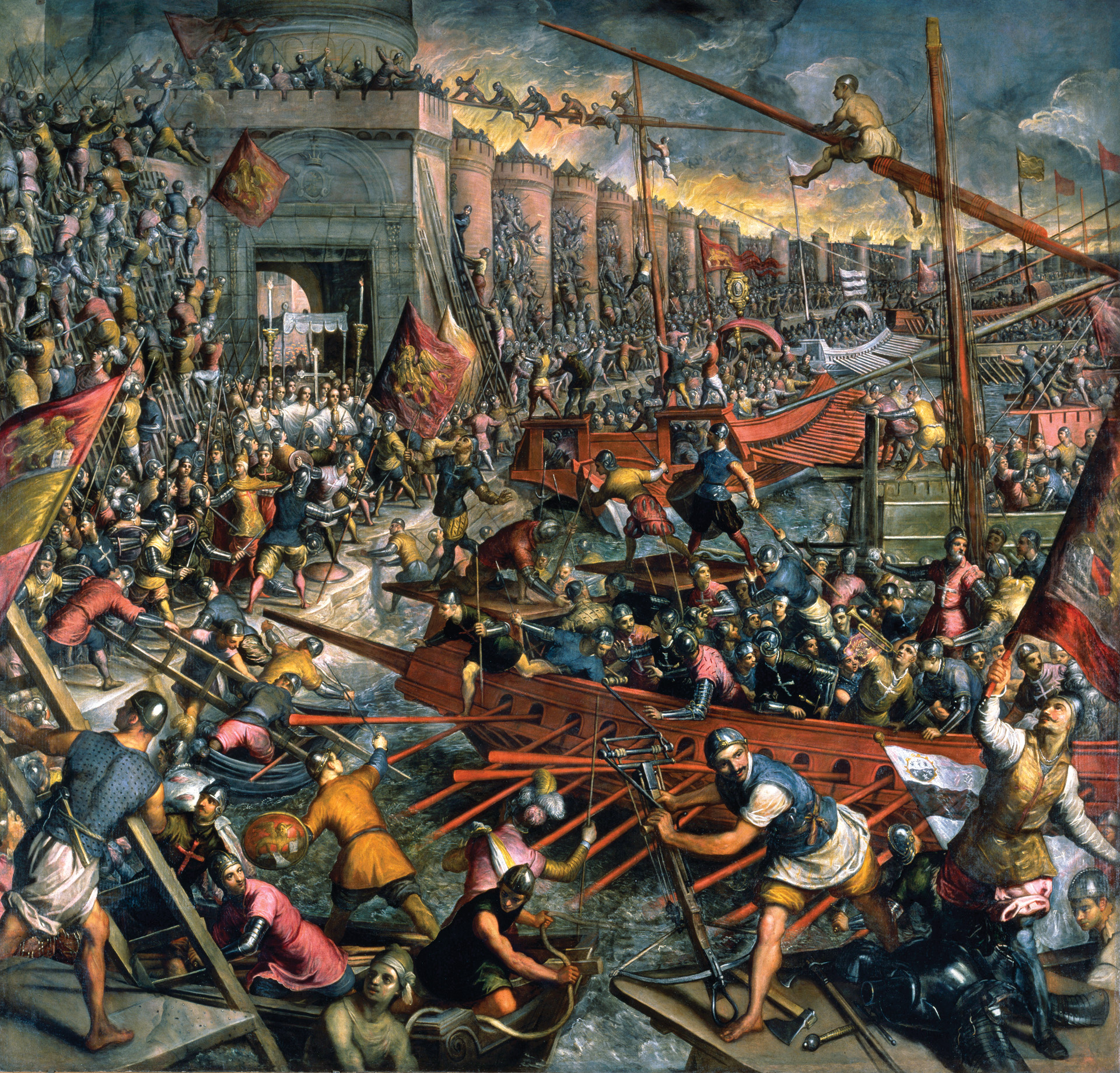
Promised three days of plunder, the Turkish troops were systematic in their looting. As noted by Barbaro, flags flew by those houses stripped of anything of value. With 100,000 men intent on booty, it wasn’t long before much of the city had been raked over and the 50,000 inhabitants dragged off to their loathsome fate. Some fighting continued, murky scuffles in side streets or stoic resistance. The Cretans, still holding out, surrendered on condition they be allowed to depart. Impressed by their tenacity, the Turks consented. They escaped to Candia, arriving there on June 9 and telling lurid tales of the dying hours of the great metropolis: “There had never been and there will never be a more dreadful happening,” wrote one eyewitness.
On June 29, the news of the defeat reached Venice and from there all Christendom was plunged into mourning. Cardinal Bessarion, of Greek origin, was told on July 4. He lamented to the Venetian Doge, Francesco Foscari, that “a city which was so flourishing … the refuge of all good things, has been captured, despoiled, ravaged, and completely sacked by the most inhuman barbarians and the most savage enemies of the Christian faith, by the fiercest of wild beasts.”
That afternoon the Sultan entered the conquered city in style, accompanied by the best of his Janissaries and his personal retinue. He ordered the plundering to stop, sensing that his men had seized enough riches, and made his way to the cathedral. There he made it known that the building should be used as a mosque and quietly knelt in thanks to Allah.
Soldiers Roam Streets, Frightened Inhabitats Hide
The night was a fearful one. Bands of soldiers still roamed the streets, looting or fighting among themselves. Terrified inhabitants lurked in cellars or hid in dark corners, too scared to come out. A few fires blazed undisturbed.
The next day the Sultan chose captives he wished to reserve for himself from the multitudes of prisoners assembled before him. He released some of the nobles and some of Constantine’s ministers, but many noblewomen were assigned to the Sultan’s seraglio. He sent 400 children to the King of Grenada and another 400 to the Sultan of Egypt. Those citizens who had avoided capture were, the Sultan proclaimed, free to return to their homes. Many of the foreigners were much less fortunate and treated in the most brutal manner. The Sultan thus sent a signal to their native governments that he was angry at their intervention. Minotto and his son and seven Venetian commanders were executed. Twenty-nine other Venetian nobles were ransomed for between 1,000 and 3,000 ducats apiece. When the relatives of Contarini failed to raise sufficient money, he too was beheaded. The Catalan Consul, Pedro Juliano, was slain as was the pretender Orkhan. A few days later the Sultan turned on the ministers he had initially spared, having 12 executed in his presence.
On June 21, the Sultan mounted his charger and rode out of the city to his capital at Adrianople. The Byzantine Emperor was dead, and the Byzantine Empire had died with him. The last vestiges of the ancient Roman Empire disappeared with it.
An old empire was swept away and a new one, that of the Ottoman crescent, was ascendant.
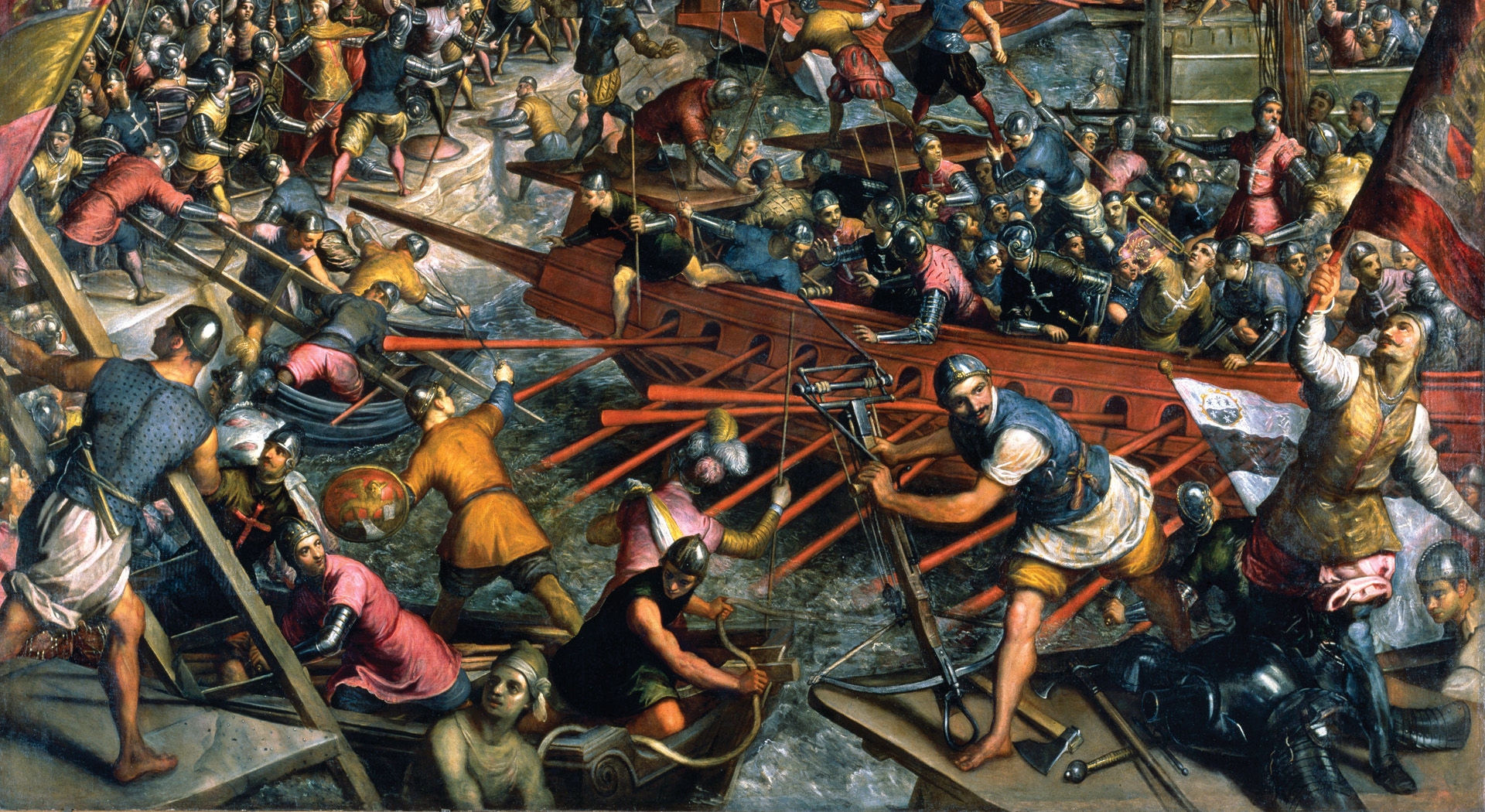
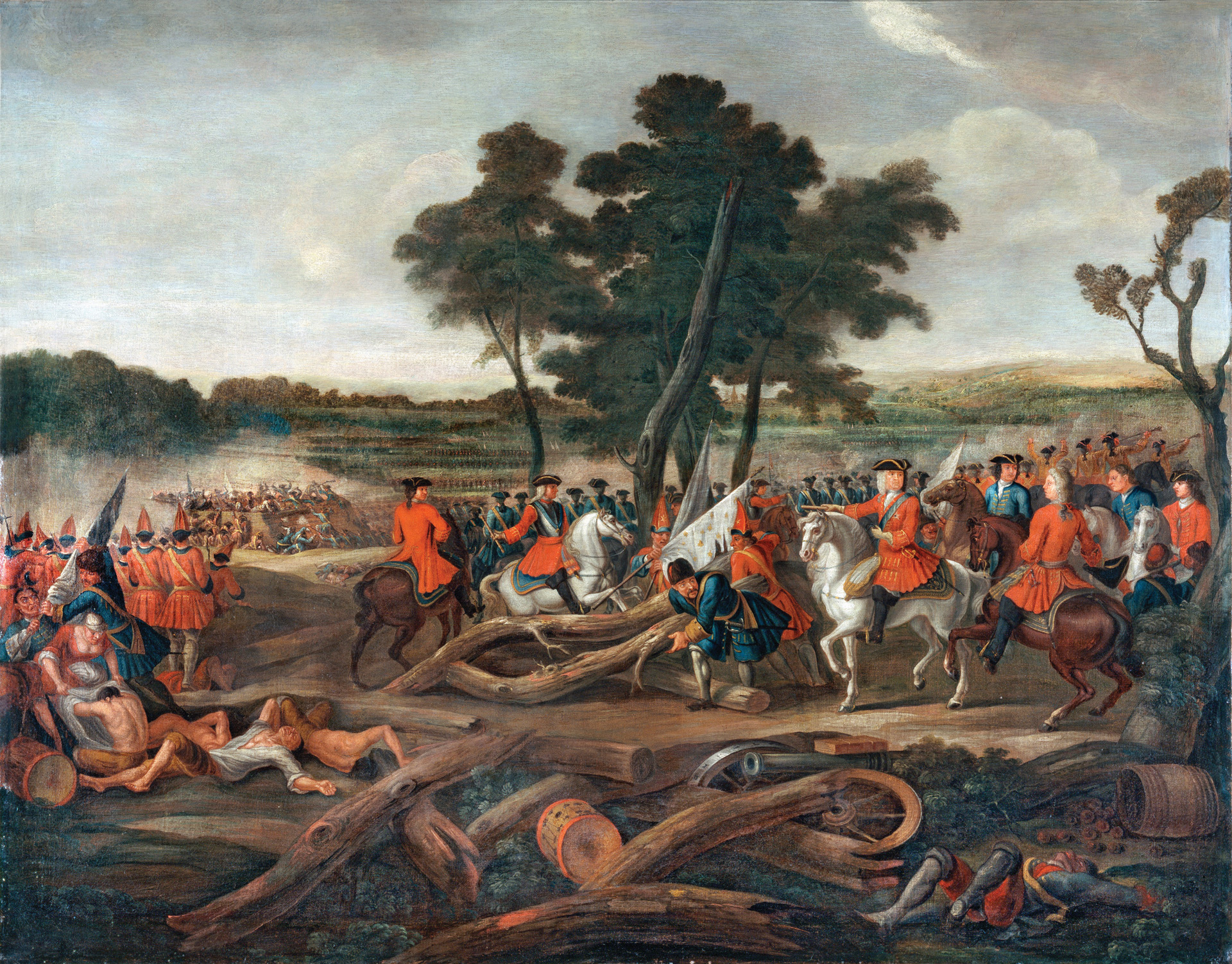
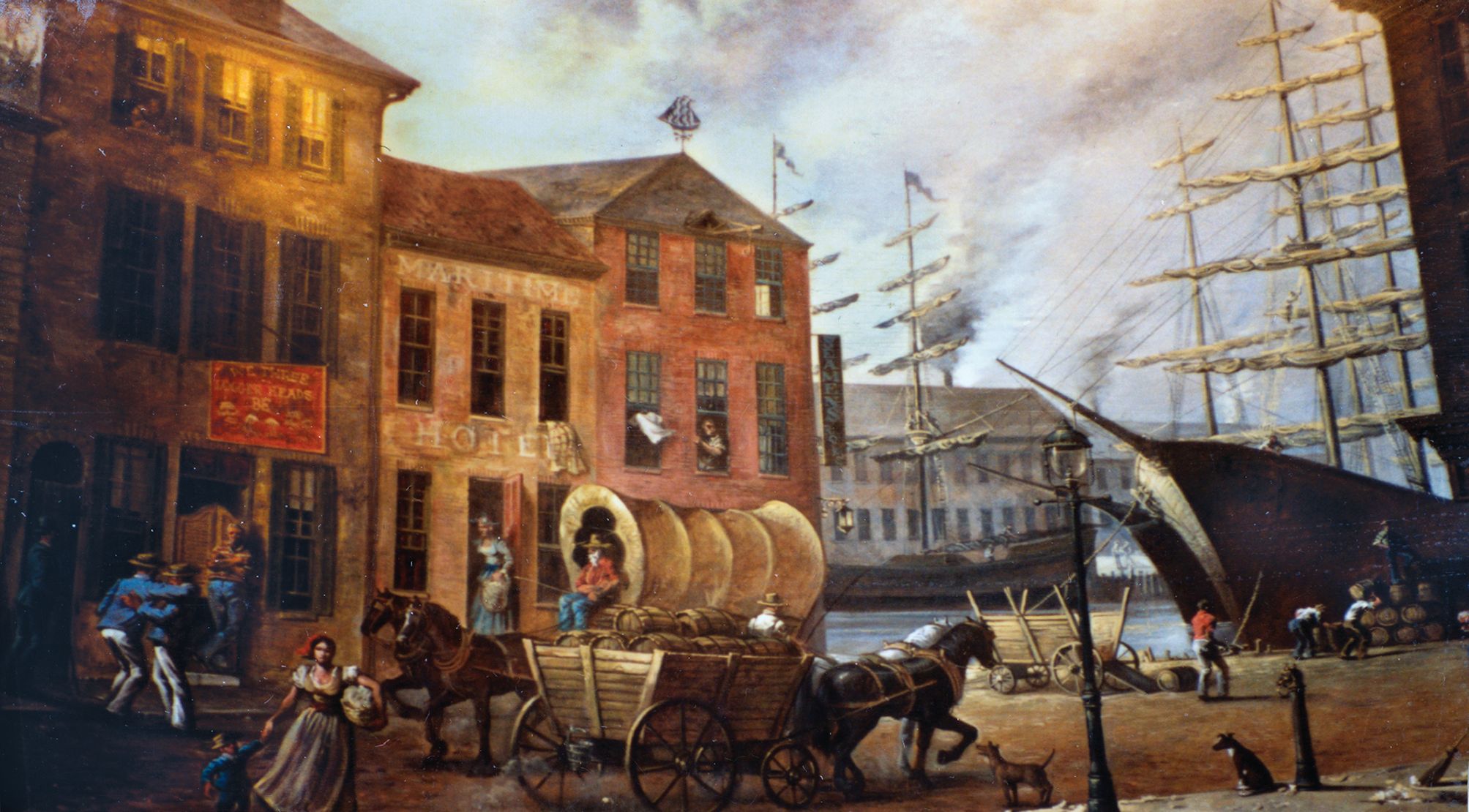
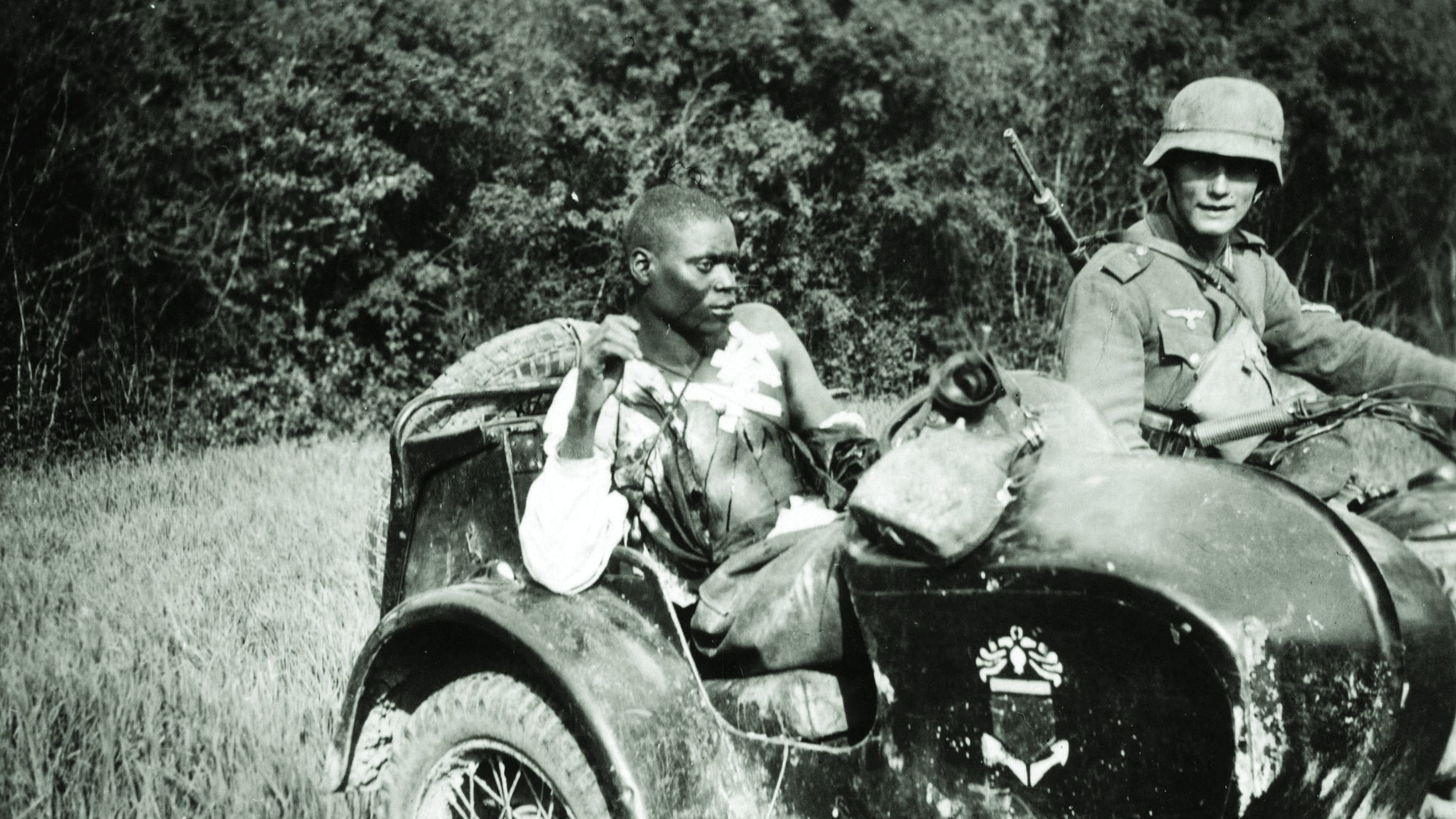
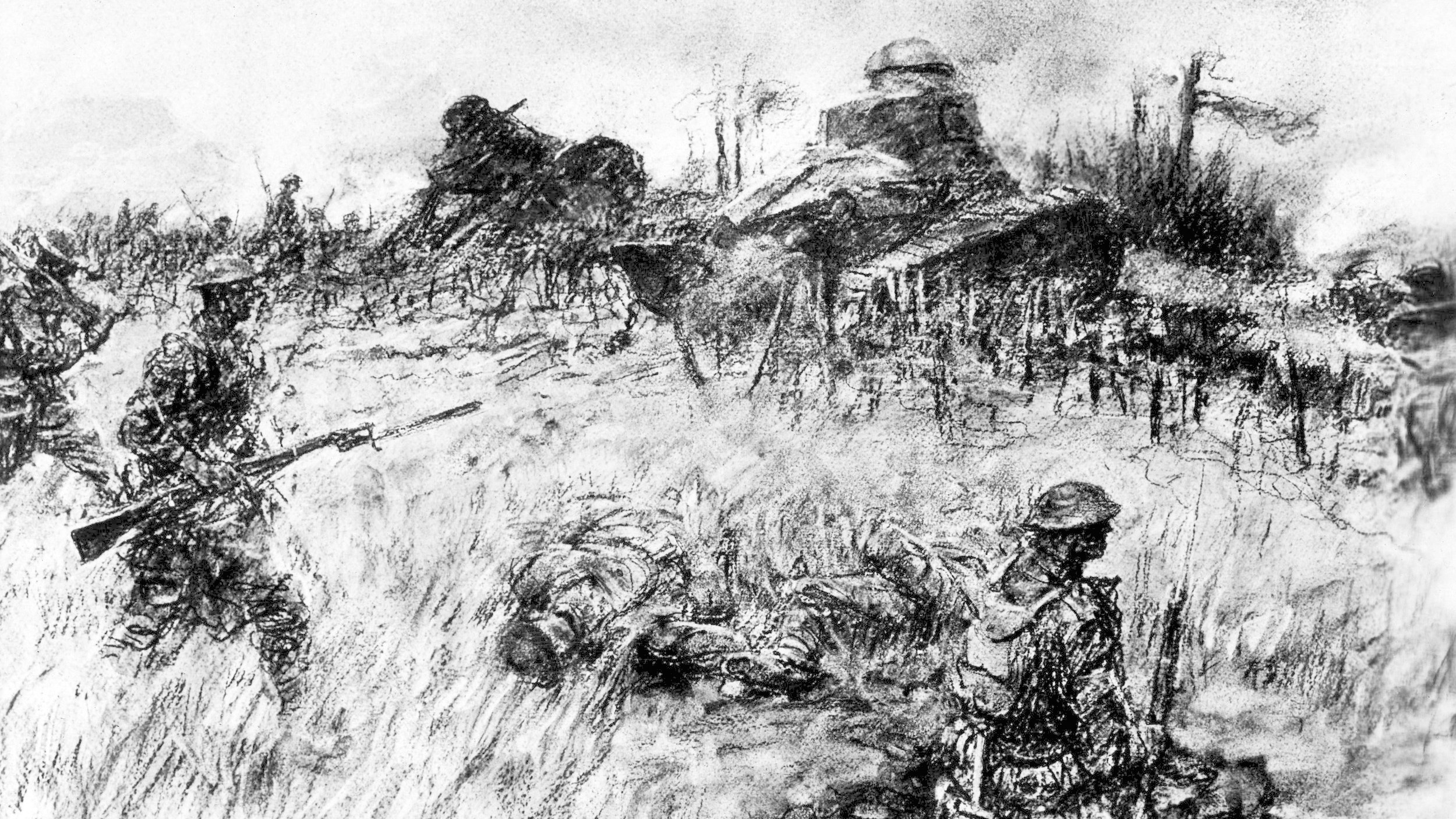
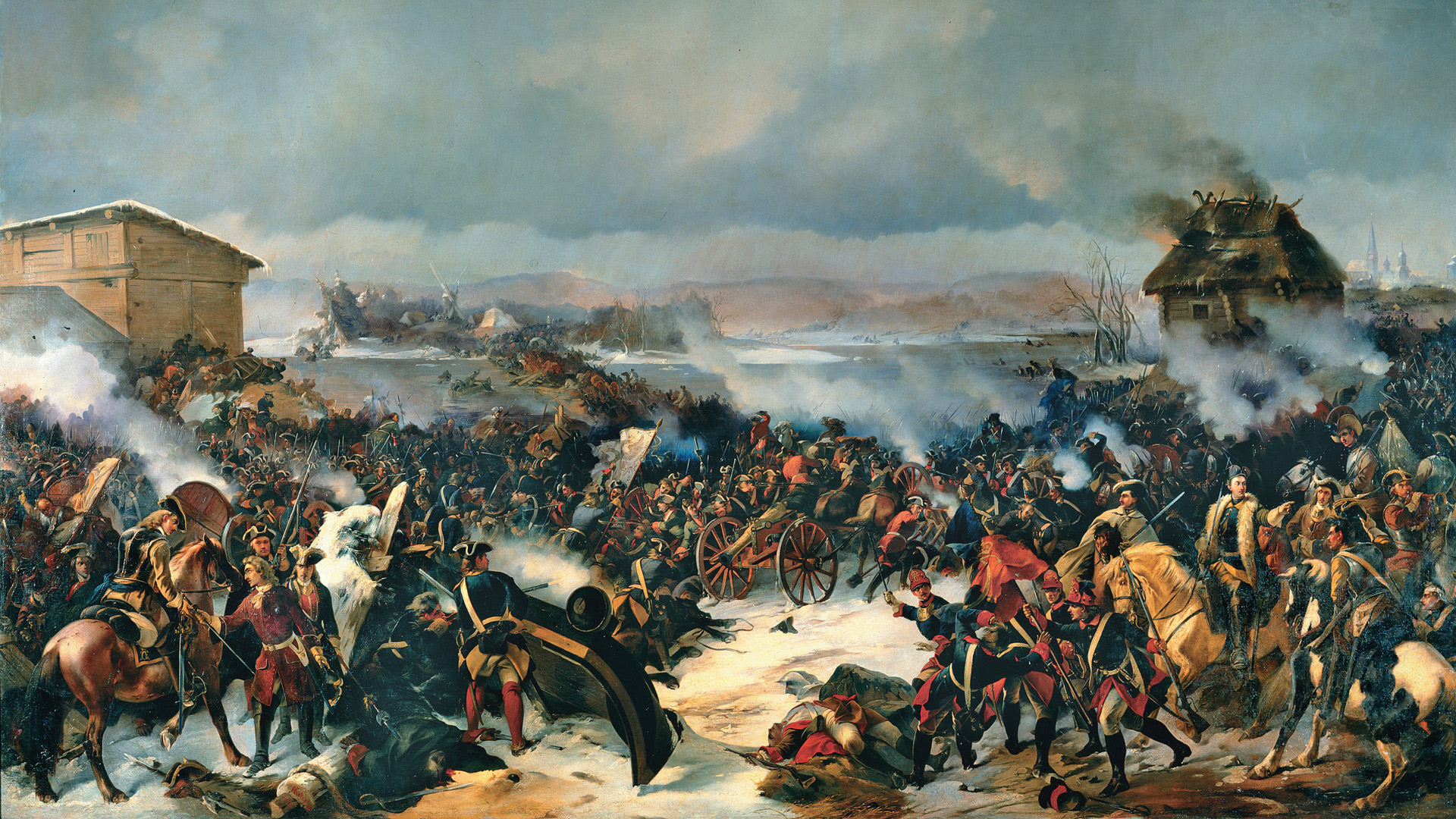
Join The Conversation
Comments
View All Comments